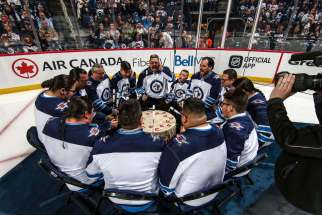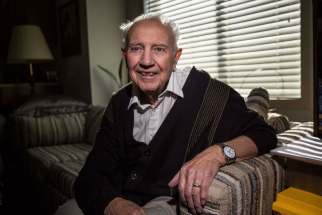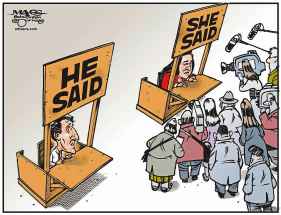Driving in the shadow of Humboldt Highway closures, treacherous conditions all in a day's work for bus drivers ferrying junior hockey teams across the province
Read this article for free:
or
Already have an account? Log in here »
To continue reading, please subscribe:
Monthly Digital Subscription
$0 for the first 4 weeks*
- Enjoy unlimited reading on winnipegfreepress.com
- Read the E-Edition, our digital replica newspaper
- Access News Break, our award-winning app
- Play interactive puzzles
*No charge for 4 weeks then price increases to the regular rate of $19.00 plus GST every four weeks. Offer available to new and qualified returning subscribers only. Cancel any time.
Monthly Digital Subscription
$4.75/week*
- Enjoy unlimited reading on winnipegfreepress.com
- Read the E-Edition, our digital replica newspaper
- Access News Break, our award-winning app
- Play interactive puzzles
*Billed as $19 plus GST every four weeks. Cancel any time.
To continue reading, please subscribe:
Add Free Press access to your Brandon Sun subscription for only an additional
$1 for the first 4 weeks*
*Your next subscription payment will increase by $1.00 and you will be charged $16.99 plus GST for four weeks. After four weeks, your payment will increase to $23.99 plus GST every four weeks.
Read unlimited articles for free today:
or
Already have an account? Log in here »
Hey there, time traveller!
This article was published 01/03/2019 (2478 days ago), so information in it may no longer be current.
Roger Hamelin wriggles his nose to steady his glasses as his eyes dart up the day’s schedule, which he smooths out on a table in the break room at the Beaver Bus Lines depot in St. Boniface.
He is booked for an hour’s drive to Steinbach, where at 11 a.m., he’ll pick up the Pistons, the reigning champions of the Manitoba Junior Hockey League, then stop in Neepawa for lunch before arriving in Waywayseecappo with time to spare before the team’s 6 o’clock faceoff against the Wolverines.
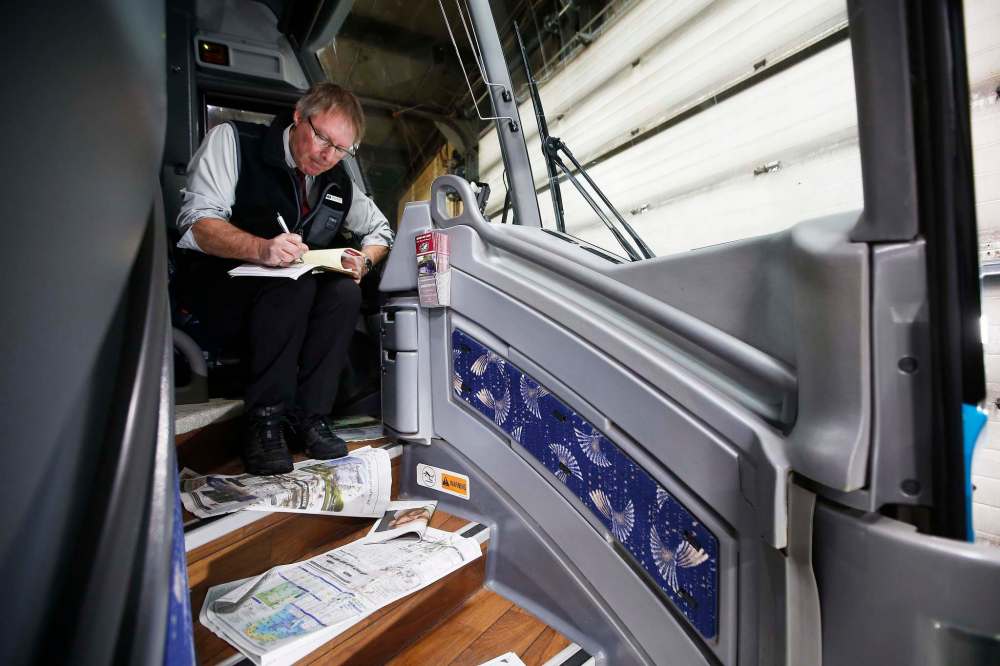
On paper, the drive is a simple one, Hamelin says. But buses don’t drive on paper; they get where they’re going over Prairie highways, where things can go wrong just as easily as they can go right.
A bus driver’s schedule represents an ideal scenario, an unobstructed sequence that takes a 25,000-kilogram machine from Point A to Point B to Point Z and back, with nothing impeding its motion.
To follow a schedule to a T, it’s understood, is aspirational — a dream — but Hamelin is attempting to make it a reality.
Hamelin, 57, arrives at the Archibald Street depot just before nine. About a half-hour later he begins an exhaustive, 30-minute headlights-to-tail lights inspection of the bus.
He checks the engine’s oil, strikes the tires to check their pressure, makes sure the air brakes are functioning properly and runs around the vehicle — 14 metres long and bright blue with images of balloons on its sides — zipping back and forth while filling out an inspection booklet.
With preparation like this, it feels certain that No. 115, “the balloon bus,” as Hamelin calls it, is ready for the road. The question as always, is whether the road is ready for it.

Hamelin constantly checks highway conditions on his phone, using the Manitoba Highways app. Routes shaded black indicate no perceivable issues, including inclement weather; and Hamelin sees all black on his screen — a good omen.
On Highway 16, which he plans to take for a stretch, the app warns of poor visibility and some blowing snow. Nothing major.
Tony Yarema, who’s driven buses, trucks and tractors for 54 years, and for Beaver since 2014, greets Hamelin in the depot. The previous day, Yarema had shepherded the Western Hockey League’s Brandon Wheat Kings to Prince Albert, Sask., where he swapped with another driver before driving back to the city solo in a company car on Sunday morning, leaving at 2 a.m.
“You could barely see past your nose,” he says. “But it looks like it’s clearing up for you, Roger.”
At 9:57 a.m., the garage door rises. Hamelin swaps out his glasses for shades, and turns onto Archibald.
“It will be a long day, that’s for sure,” he says.
● ● ●
Hamelin’s drive to Steinbach is a smooth one, although he cruises past at least six cars in the ditch before pulling up to T.G. Smith arena with a few minutes to spare before the players and staff climb aboard.
The Pistons are a big part of the city’s identity, much like the Jets are in Winnipeg. The streetlight stanchions on Main Street’s boulevard display hanging skates, sticks and helmets, a promotional gimmick ahead of Steinbach’s upcoming appearance on CBC’s Hometown Hockey series. Yet, one gets the sense that nobody would bat an eye if the equipment was displayed year-round.
This team, like the others in the “M,” matters, deeply, to the community. When the Pistons take home ice, it is the main event, and the players — who range in age from 17 to 21 — are the performers whose names grace the marquee.

Some will go on to play on full scholarships at schools belonging to the NCAA, the American collegiate sports governing body; others will suit up for U Sports, the Canadian version. Some will turn pro, either in North America or overseas. And some will never advance much further than the MJHL.
There’s really no way to tell where they will end up; they’re all so young, so fast, so skilled, so full of potential for something more.
None of this is lost on Hamelin, who’s keenly aware that he’s transporting priceless cargo.
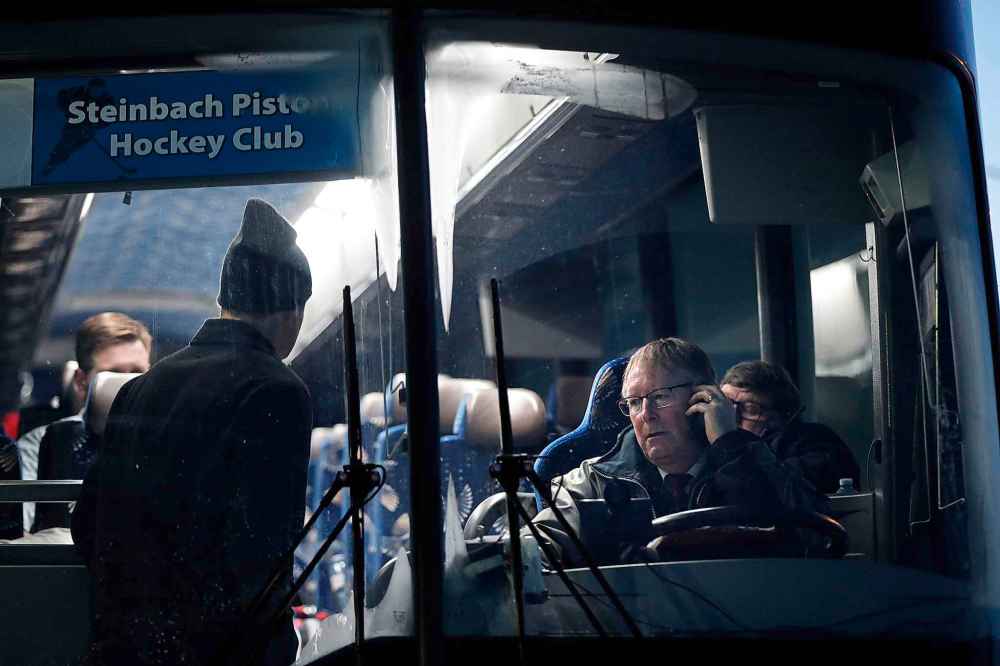
Right on time, at 11, the door to the arena swings open, and Hamelin is waiting with the luggage bays open.
Nearing two decades on the job, he’s got the organization of the baggage down to a science; an ultra-Canadian version of Tetris. He supervises as the team’s rookies do the brunt of the heavy lifting.
Soon, the once-quiet bus becomes filled with a dialect that can only be described as “hockey talk” and Hamelin makes his introduction.
“Hello everyone, my name is Roger,” he says, before telling his passengers what to expect of the drive.
When he finishes, the team applauds.
● ● ●
Tyson McConnell, the team’s captain and, in his fourth season, its longest-tenured player, is no stranger to long bus rides.
Growing up in Pilot Mound, McConnell says he, like most of the others on the team, views the bus as a second home of sorts.
“The bus is where the team bonds the most, and it’s where most of the conversations and connections happen,” he says.
After four years, and many road trips, McConnell feels at ease on the bus, but it would be a different case were he behind the wheel. “I couldn’t imagine being a driver,” he says.
As the team leaves Steinbach, the roads are snowy, nothing out of the ordinary, and Hamelin manoeuvres the bus along the highway’s slick curves.
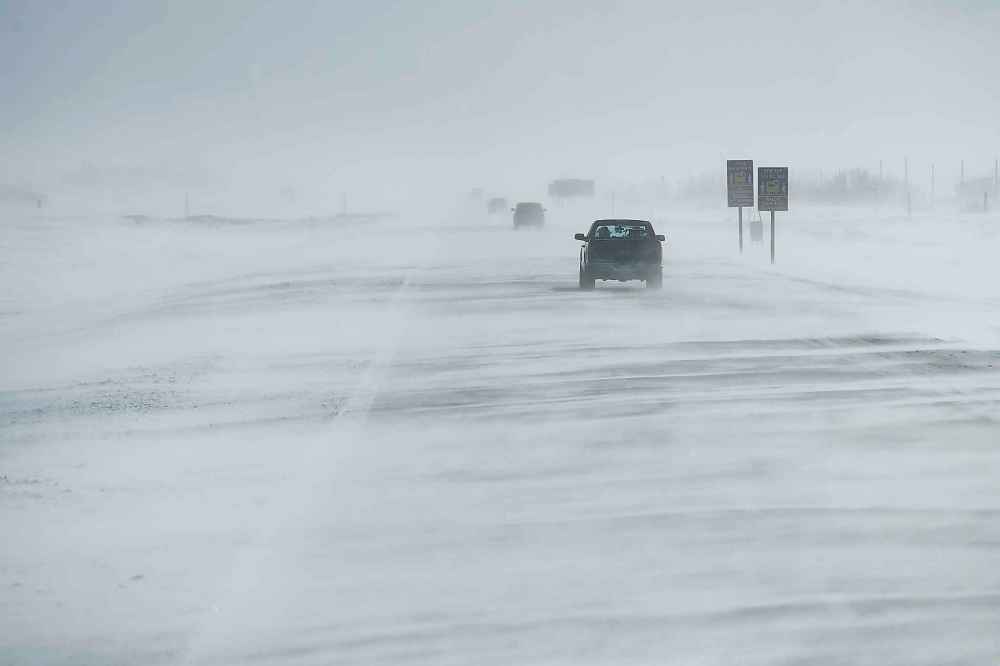
Most of the players spend the first leg of the trip napping, pulling their tuques over their eyes, resting their feet on their teammates’ headrests and pressing their faces smack against the window panes.
It’s a credit to Hamelin that anyone is asleep, because the roads are a long way from perfect.
But on the Trans-Canada just outside Headingley at about 12:15, the players are shaken awake by a sudden stop.
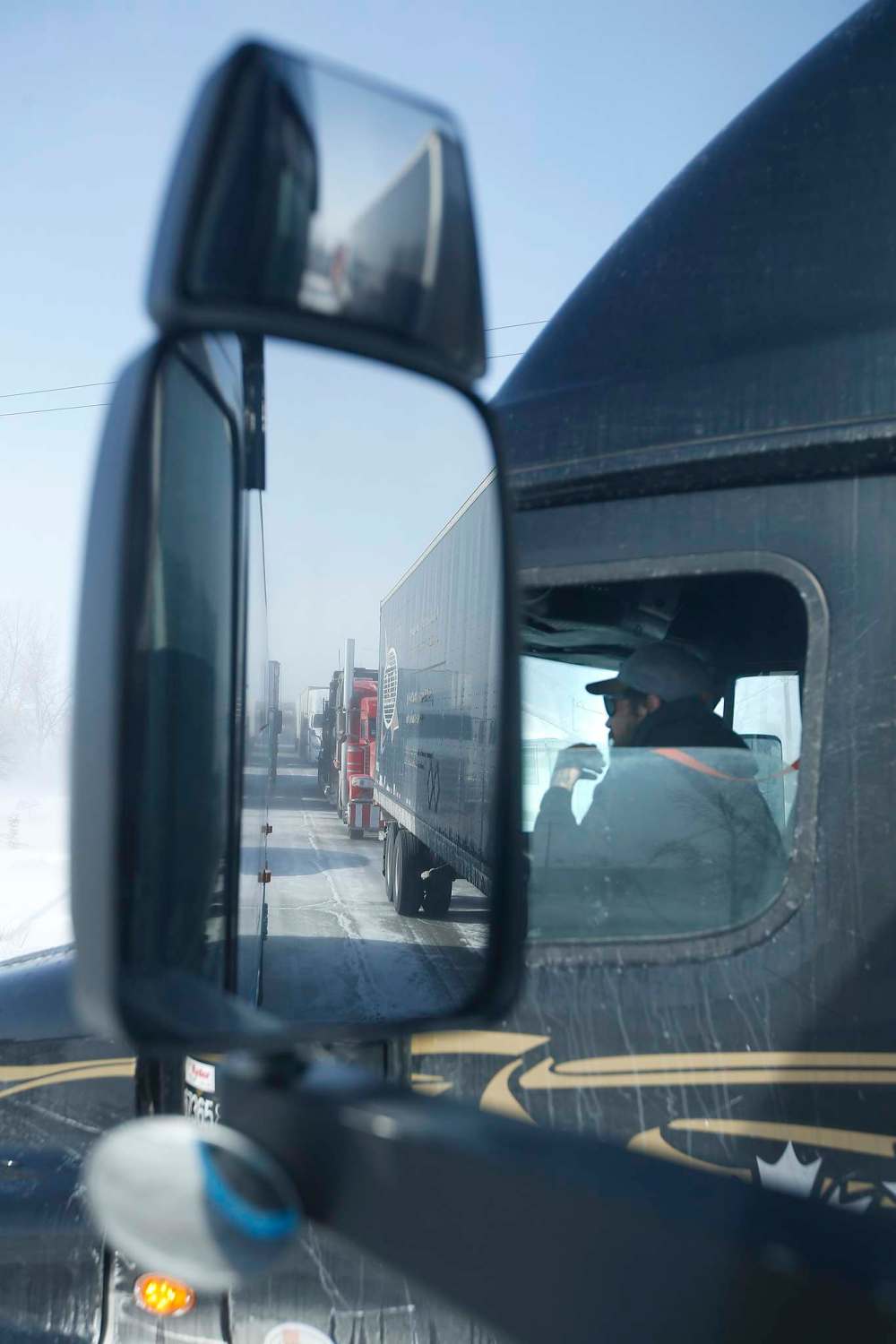
“They’ve closed the highway,” Hamelin says, turning to his right to address the team’s coach-general manager, Paul Dyck.
With the highway closed, Hamelin has no choice but to check for alternate routes, but, sandwiched between semis and sedans in all directions, the bus is stuck.
Visibility has worsened, and the only thing Hamelin can see is the faint lights of a police cruiser stopped at the weigh station to prevent traffic from proceeding.
“There’s no way we’re getting there on time,” predicts Ryan Dyck, the team’s 18-year-old equipment manager, before returning to rest under his blanket fort.
Hamelin isn’t nervous about what lays ahead, but he is glancing at the schedule. The team is is supposed to be at Chicken Corral in Neepawa at two o’clock for their pregame meal, and it’s looking increasingly as though the food will go uneaten.
The minutes-long standstill becomes an hours-long one. The players and some of the coaches retreat into their smartphones to listen to Spotify or watch Netflix.
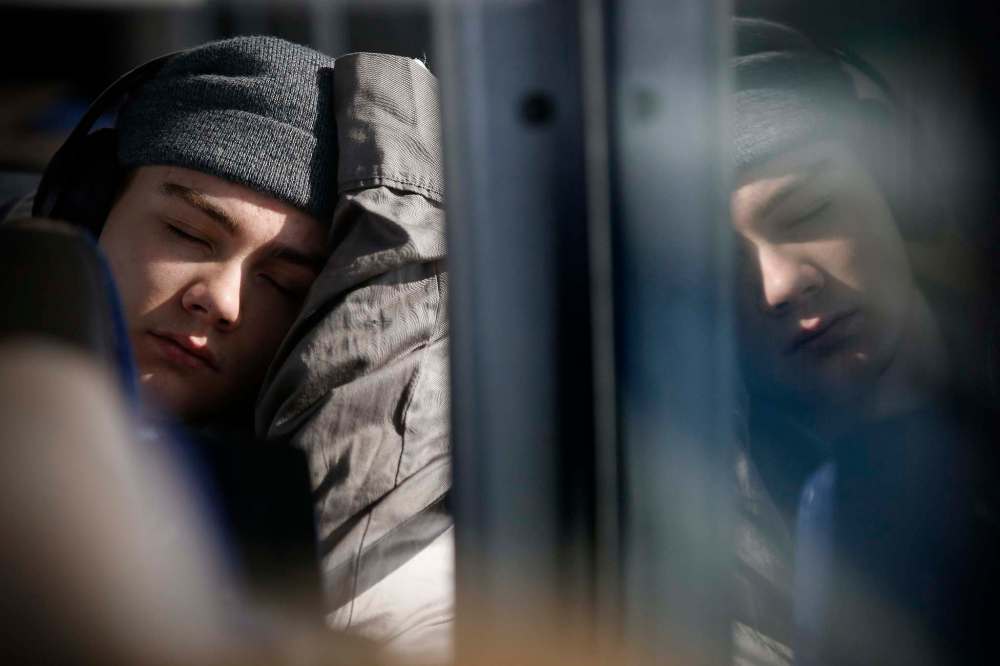
Coach Paul Dyck was born in Steinbach and selected by the Pittsburgh Penguins in the 11th round of the 1991 NHL entry draft before embarking on a 15-year pro career that took him from the now-defunct International Hockey League — with stops in Muskegon, Mich., Cleveland, Detroit, Kansas City and Houston — to five seasons playing in Germany.
Dyck grew used to bus trips like these, and stoppages on the highway were an expected occurrence during the winter.
But as a coach, he thinks about things differently, he says.
“I feel very responsible for ensuring our players arrive safely,” he says during the three-hour delay. “I always have.”
Just short of a year ago, he, along with the rest of Canada, and the world, got a grim reminder to not take a safe arrival for granted.
● ● ●
The puck was just about to drop in Steinbach on April 6 for the first game of the 2018 MJHL Finals between the Pistons and the Virden Oil Capitals when Paul Dyck’s phone began to buzz.
A bus carrying the Humboldt Broncos — one of the top teams in the Saskatchewan Junior Hockey League — to their playoff game in Nipawin, had crashed, MJHL commissioner Kim Davis informed the Steinbach coach. Dyck did his best to keep his composure; at that point, the details of the incident were still being sorted out as the Pistons took the ice for warmup.
“I immediately sent a text message to (Humboldt head coach) Darcy Haugan,” recalled Dyck, who admired Haugan as a coach and a friend. “Needless to say, I did not get a reply.”

As the game went on, the packed arena grew quiet, and Dyck sensed something terrible had happened. At intermission, the coaching staff began to hear reports of fatalities from the crash site on Highway 35.
“I remember going to our dressing room and making sure no players had cellphones in their stalls. At that point, we were just trying to keep it from them, even though it was evident that the fans had already found out,” he said. “We had to keep playing.”
“None of us had a clue what had happened until after the game,” recalled McConnell, who, along with a few other Pistons had played with Matt Gomercic, a Winnipeg-born player then on Humboldt’s roster. The Pistons’ Daniel McKitrick had played two seasons with the Broncos; though in different leagues, the teams were connected.
“It was our worst nightmare come true.”–Pistons coach Paul Dyck on the Humbolt crash
“It was our worst nightmare come true,” says Davis.
A transport truck carrying peat moss had collided with the Broncos’ bus near Tisdale, Sask., killing 16 people and injuring 13. Ten players — Logan Boulet, Adam Herold, Logan Hunter, Jaxon Joseph, Jacob Leicht, Conner Lukan, Logan Schatz, Evan Thomas, Parker Tobin, Stephen Wack — and six team personnel including broadcaster Tyler Bieber, athletic therapist Dayna Brons, assistant coach Mark Cross, statistician Brody Hinz and head coach Darcy Haugan were dead. So was Glen Doerksen, the 59-year-old bus driver.
Gomercic, the former Piston, survived, but was among the 13 players injured and forever changed. The bus was travelling north on 35, the truck west on 335. The Broncos were about half an hour away from the arena in Nipawin, where the Hawks were waiting.
In an instant, Canadian history changed.
“We lost that game, but that was secondary,” says Dyck. “Everything was secondary. I couldn’t sleep that night, and for the ones on our team closely connected to the Broncos, it was a very difficult time.”
● ● ●
While the country was mourning and the injured were beginning their roads to recovery, the Pistons’ season continued.
The team eventually won the MJHL championship and in the Anavet Cup, in which the MJHL and SJHL winners play each other, faced Nipawin, whose series against Humboldt came to a tragically early end.
Before the Cup began, the Pistons took time to visit the crash site. Players knew where they were headed, but the emotions hit them hard as the bus crept to halt.
“I’ll never forget how quiet our bus was,” Dyck says.

The Pistons stood for about 25 minutes, trying to process what had brought them there. Three weeks earlier, a bus just like theirs had gone down the same road, headed to the same arena, to play the same team.
One team never made it, the other arrived right on schedule. It was the same trip, on paper.
On the bus, teammates get to know one another. They chat, they joke, they swear, they sleep, they dream, they watch game tape, they step over sleeping teammates to get to the bathroom they can barely squeeze their six-foot-something frames into.

Nobody knows exactly what was happening on Humboldt’s bus before the crash, but it was likely something close to that. The crash could have happened to anyone.
“It’s normal for young people to think we have 60 or 70 years ahead of them, and that those years are guaranteed,” Dyck says. “At the crash site, I think our players learned that they’re not.”
“The bus was so quiet,” says McConnell. “It put hockey second, and it gave us more purpose. It made me try to make the most out of every single day.”
● ● ●
At 3:08 p.m., police reopen the Trans-Canada. “We’re going to Wayway!” shouts centre Kyle Bettans, 17.
Hamelin, who has been resting behind the wheel, finally puts his foot on the gas pedal. Within a few minutes, the balloon bus is going 100 km/h, and the reasons for the delay became clear.
Snow is billowing across the highway in broad streaks, creating massive windrows that would be a challenge to smaller vehicles. A young woman’s Hyundai Sonata sits in the ditch to Hamelin’s left. To his right, a semi-trailer. It appears a flat-bed truck collided with a station wagon.
Everywhere is white, but Hamelin is unfazed.
The bus pulls into Neepawa at 4:45 p.m. Puck-drop has been postponed until 8.
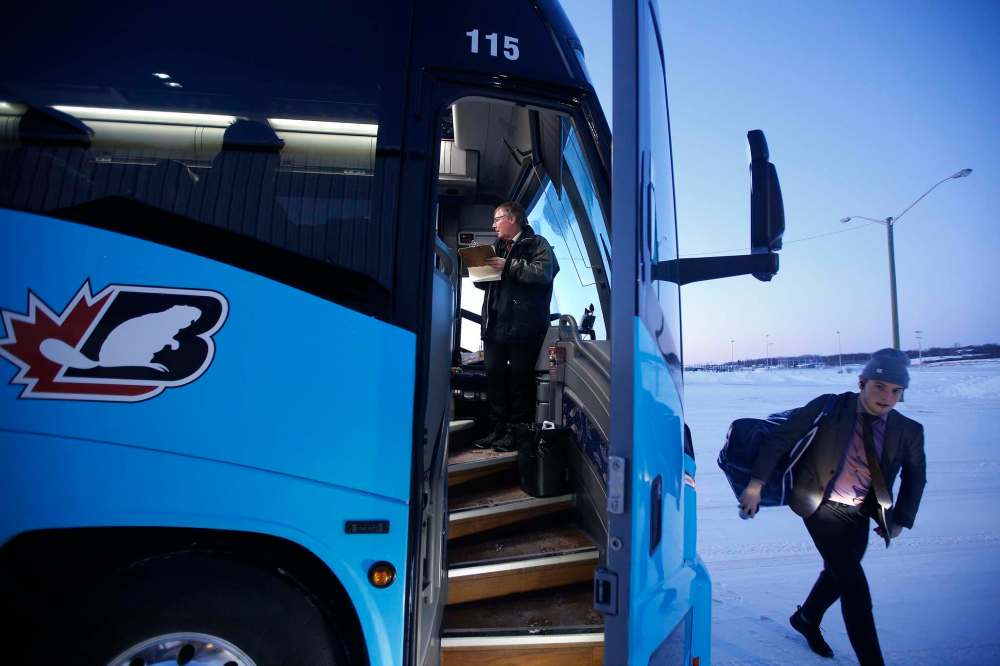
While the team scarfs down spaghetti, Hamelin grabs a sandwich and promptly returns to his seat.
The players are back in 20 minutes, and by then, the sun is on its way down.
At about 5:30, the bus becomes an impromptu change room as the players swap their sweats for suits.
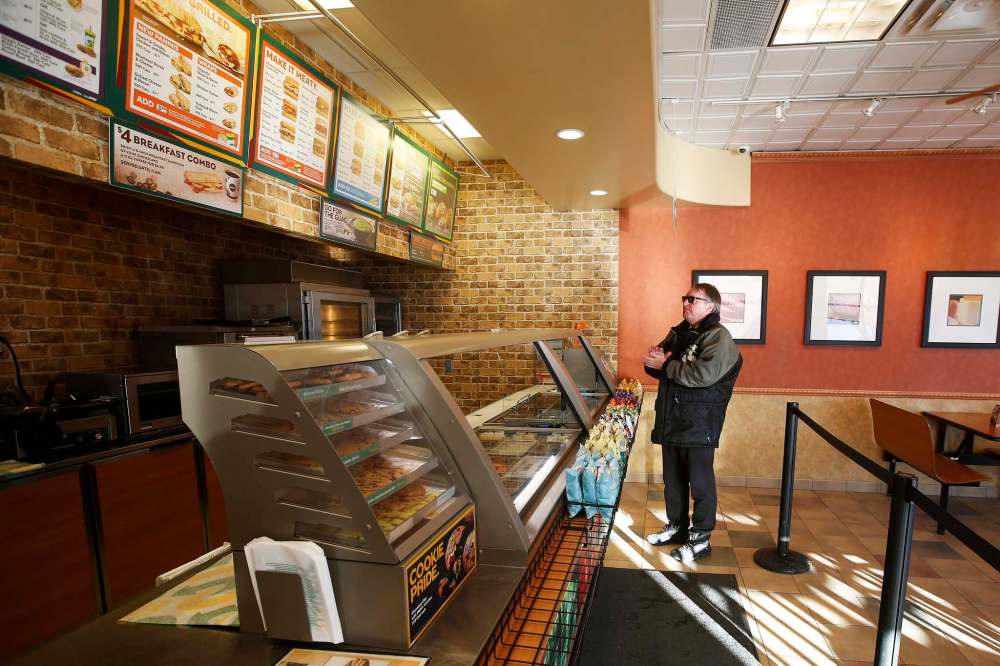
Finally, after nearly eight hours on the road, the Pistons are in Waywayseecappo. Hamelin unloads the bags and climbs inside the vehicle once again to take a nap.
The referees are already there after making the same treacherous drive in a sedan. Nolan Powell, a former AAA player, usually drives, but was a passenger today; it didn’t make the drive any less stressful.
“Once we step on the ice, that’s the easy part,” he says.
Fans start to trickle into the rink at about 7 p.m., and one of the first to take his seat is Charles Tourangeau, who travelled more than two hours from Kansack, Sask., to Waywayseecappo to see the game.

Tourangeau wasn’t intimidated by the journey — he’d been a charter bus driver for teams such as the WHL’s Regina Pats and the Saskatchewan Midget AAA Moose Jaw Generals.
“Even in whiteouts, I never got nervous. No matter how stormy, we always drove,” he says. “But Humboldt bothered me for a long time.”
The driver died, after all, through absolutely no fault of his own, says Tourangeau, who retired from driving last year.
“There’s nothing a driver can do in that situation.” he adds. “It breaks my heart, and I pray for the team and the community. I feel especially fortunate that I never had an accident, but it can happen to anyone. It’s part of driving.”
Hamelin, meanwhile, says that what happened to Humboldt is something every driver fears, but that it didn’t change the way he does his job. There’s always been dangers on Canadian roads, but long before the crash, he’d put passenger safety above all else.
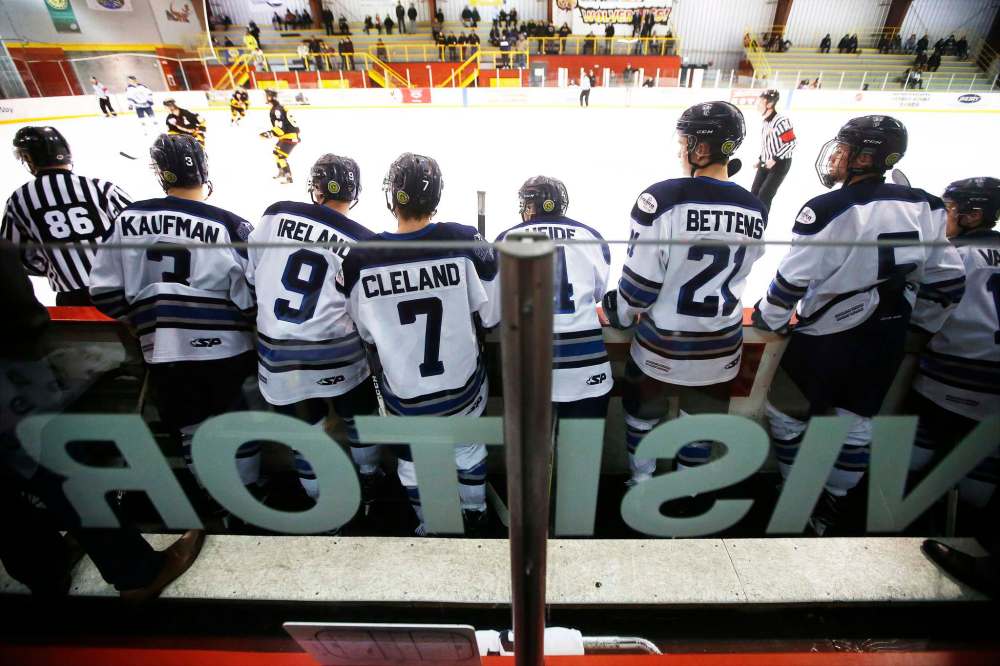
On the ice, Steinbach manages to play fast, despite their slow trip to Waywayseecappo. After his nap, Hamelin catches the second and third periods, and when the buzzer ends the game with Wayway up 1-0, he’s back behind the wheel.
The Pistons climb aboard and Hamelin readies for the final drive of the day. Drivers are allowed to be on the road for a maximum 13 hours in a 24-hour day, according to federal law. Hamelin’s 13 is quickly approaching.
As the players sleep he pilots the bus to Portage La Prairie, where a second driver is waiting in a company SUV, to relieve him of his duties.
“Hi Gary,” Hamelin says, somehow still polite after a hellish day on the road.
“Keys are in the car, Roger,” Gary Kansky replies.
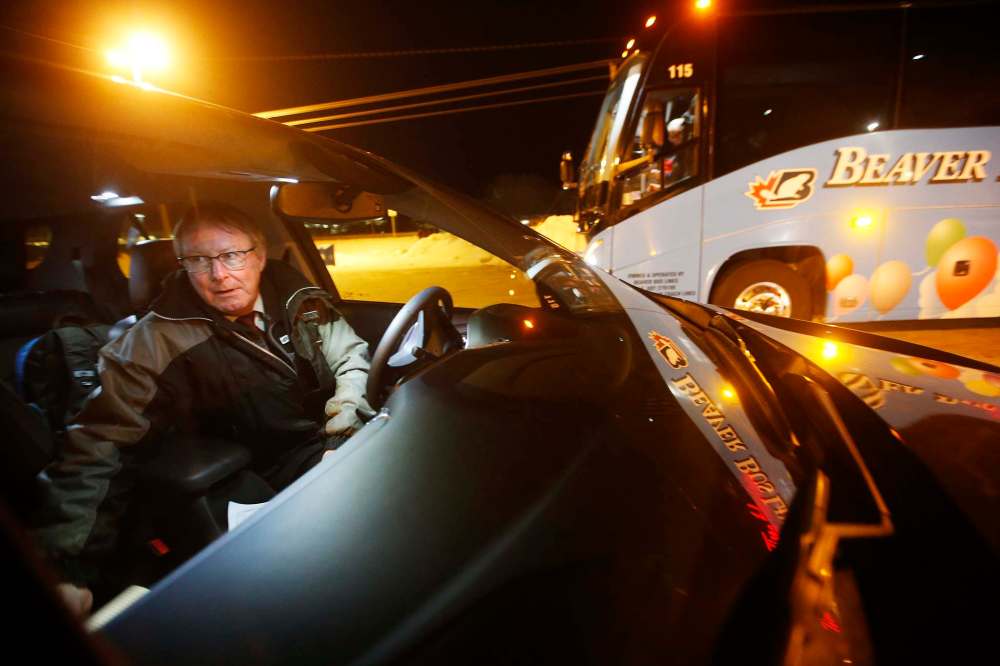
In the SUV, Hamelin sets off on the highway alone as the Pistons head back to Steinbach with Kansky at the wheel.
Hamelin stifles a yawn, but otherwise remains alert on the drive back to the depot.
Eighteen hours after beginning his inspection, Hamelin is back where he started.
It’s three o’clock when he officially clocks out, gets into his own car to drive home to South St. Vital. About the same time, the Pistons are getting off the bus in Steinbach.

Is he tired?
“Getting there,” he says.
It had been a long day, that was for sure. But the Pistons had made it all the way to Wayway and all the way back, safe and sound.
Finally, the bus driver could rest easy.
See more of John Woods’ photography from this trip in our gallery.


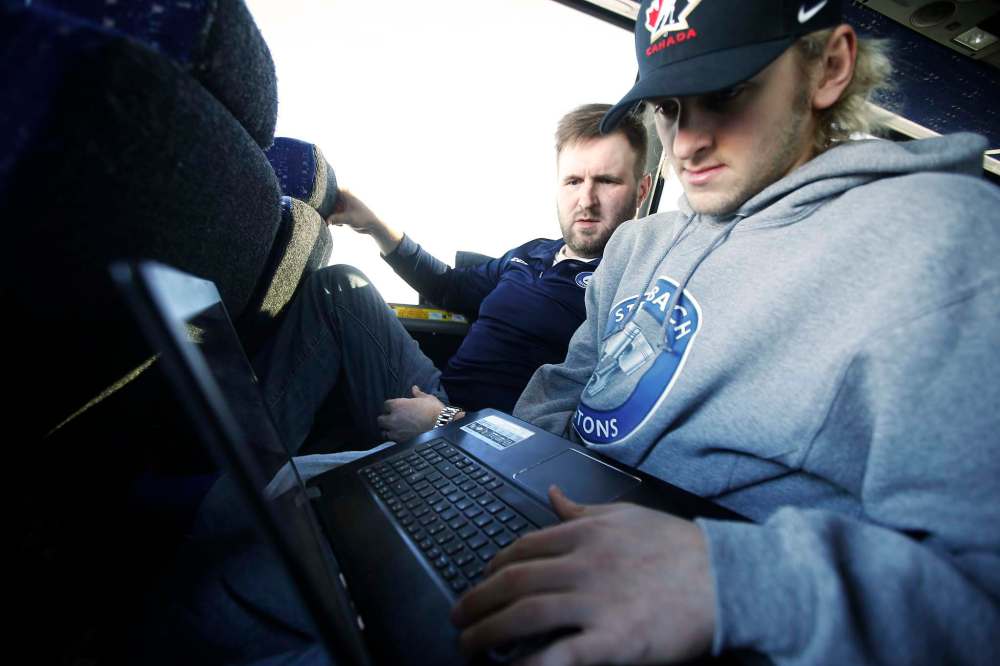
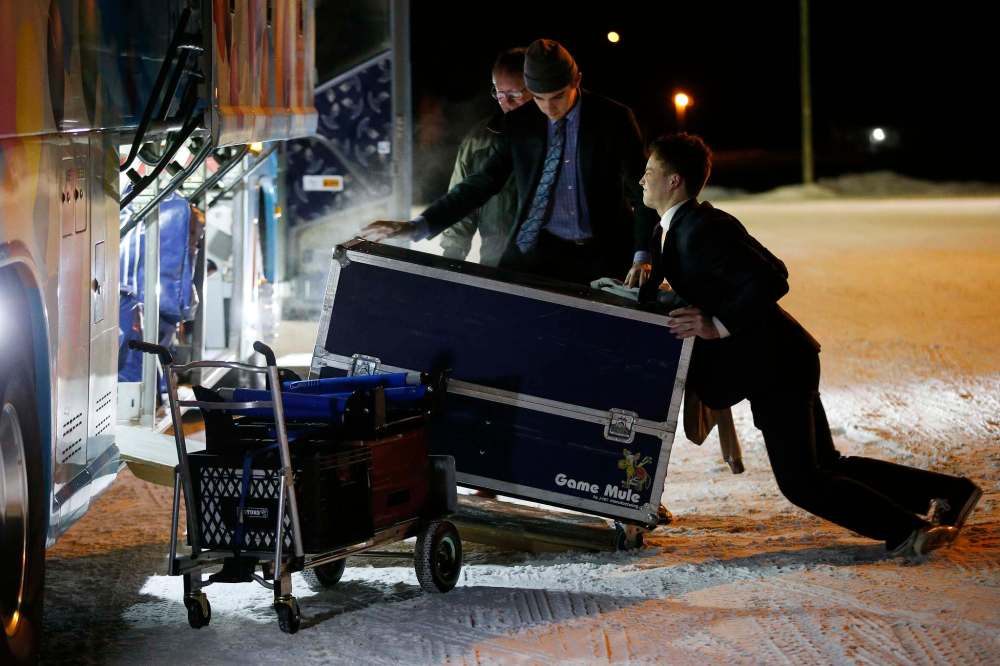
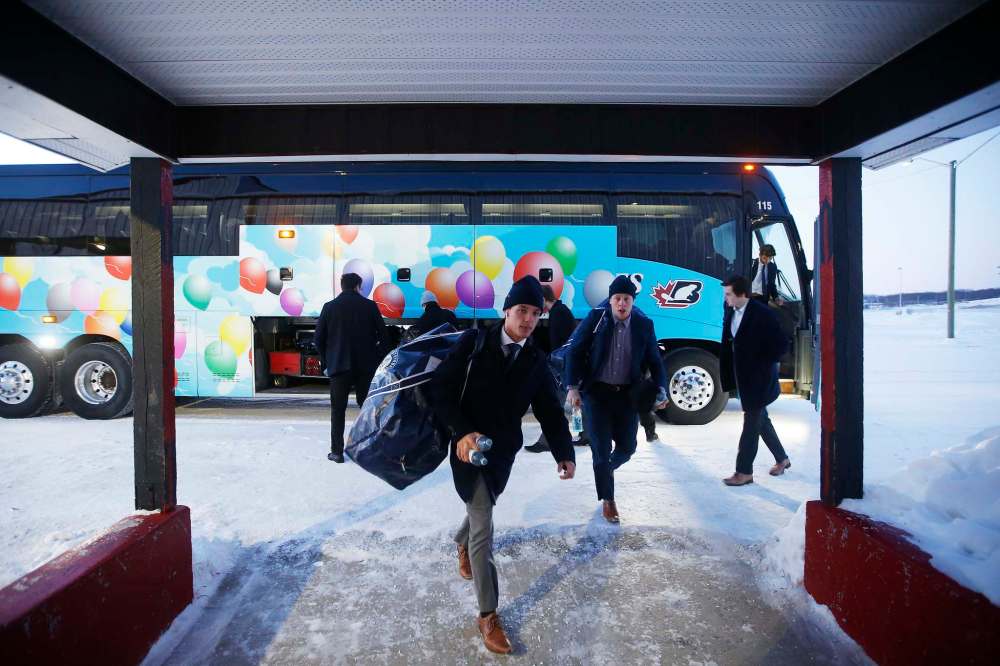
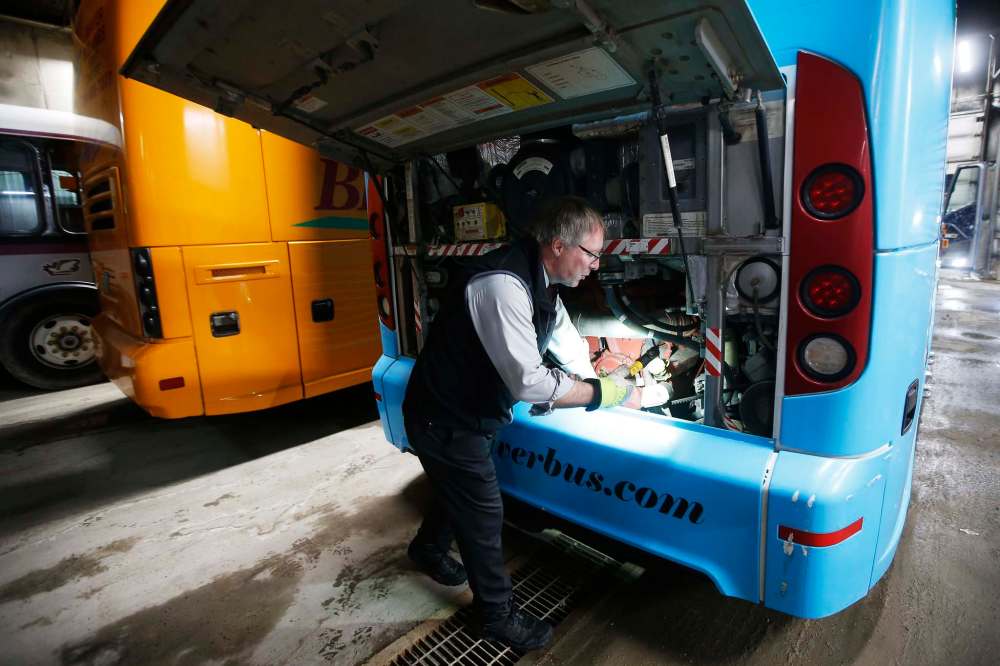
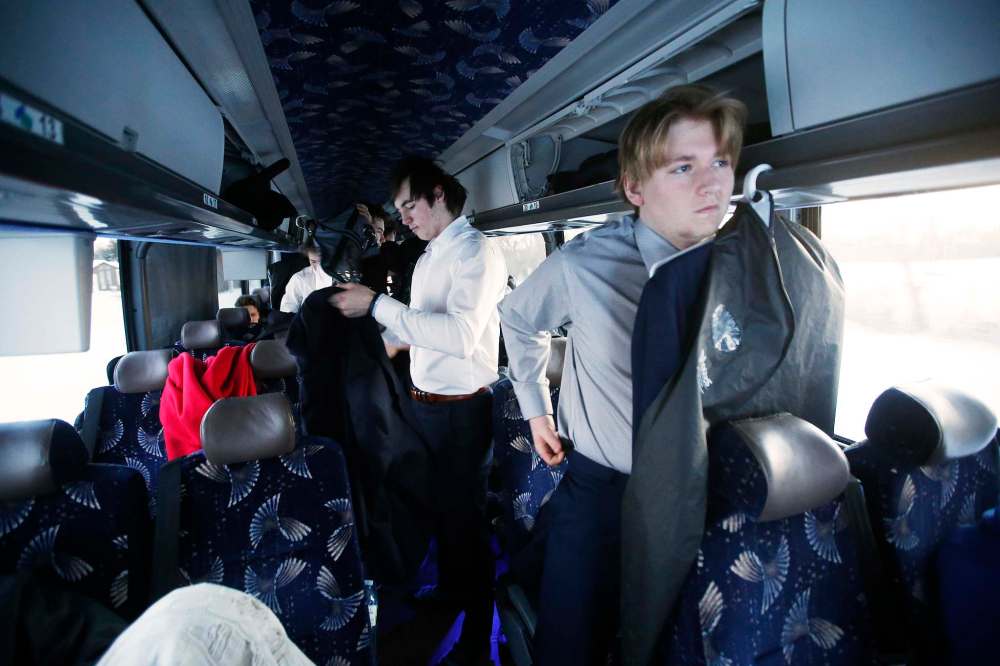
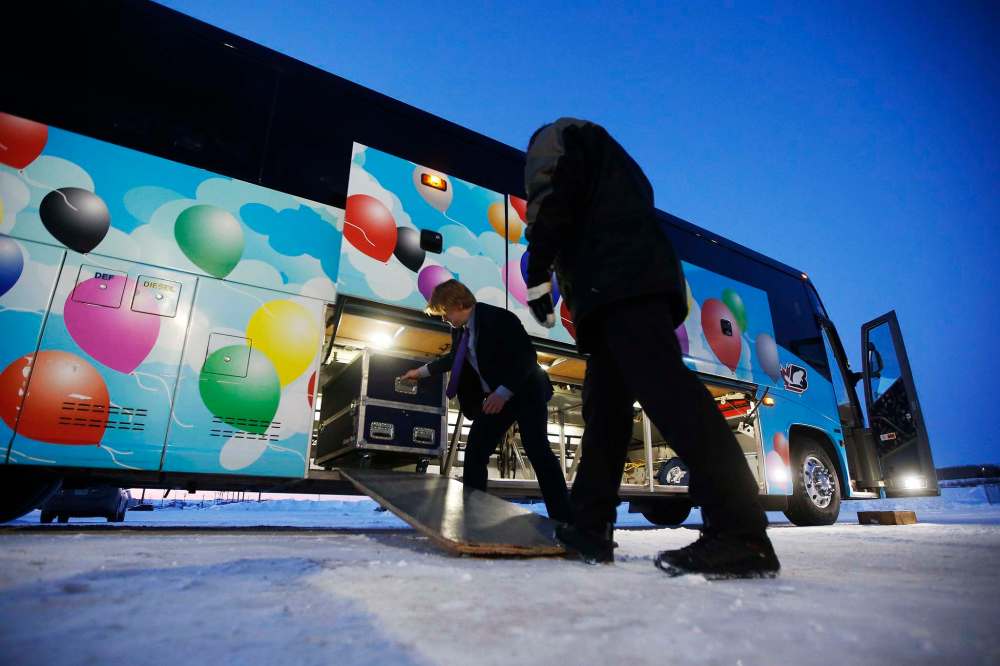
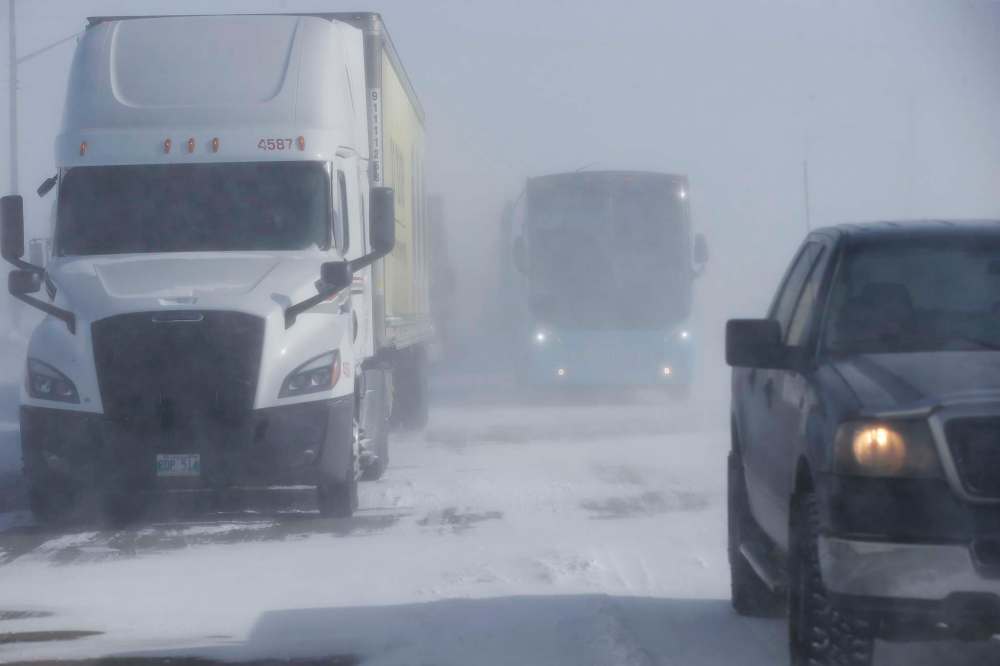

Ben Waldman covers a little bit of everything for the Free Press.
Our newsroom depends on a growing audience of readers to power our journalism. If you are not a paid reader, please consider becoming a subscriber.
Our newsroom depends on its audience of readers to power our journalism. Thank you for your support.
History
Updated on Saturday, March 2, 2019 4:57 PM CST: Typo fixed.



